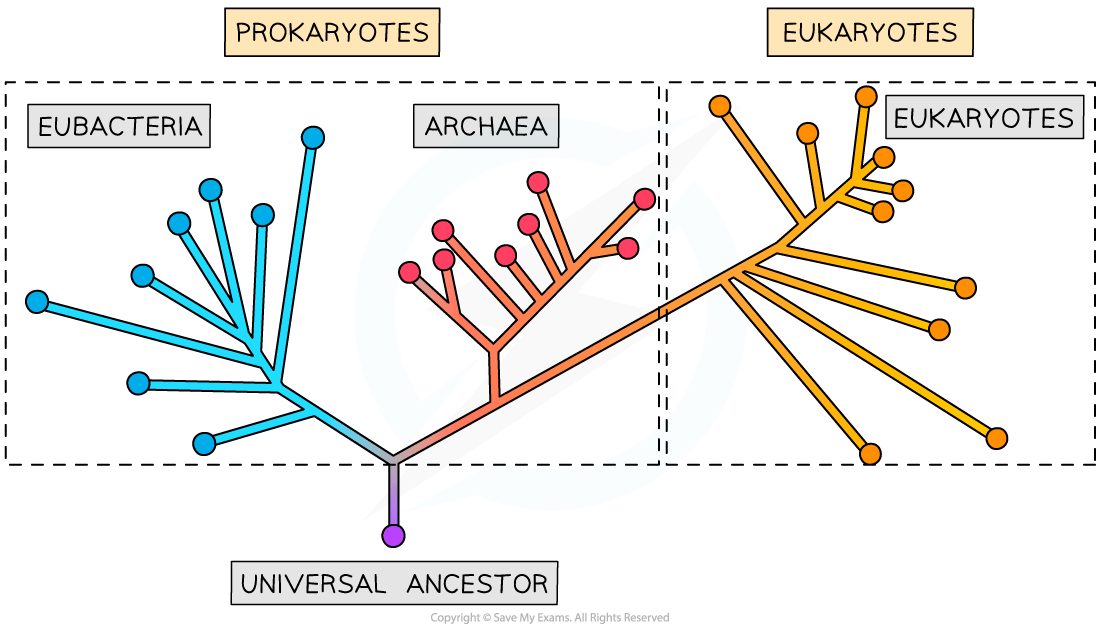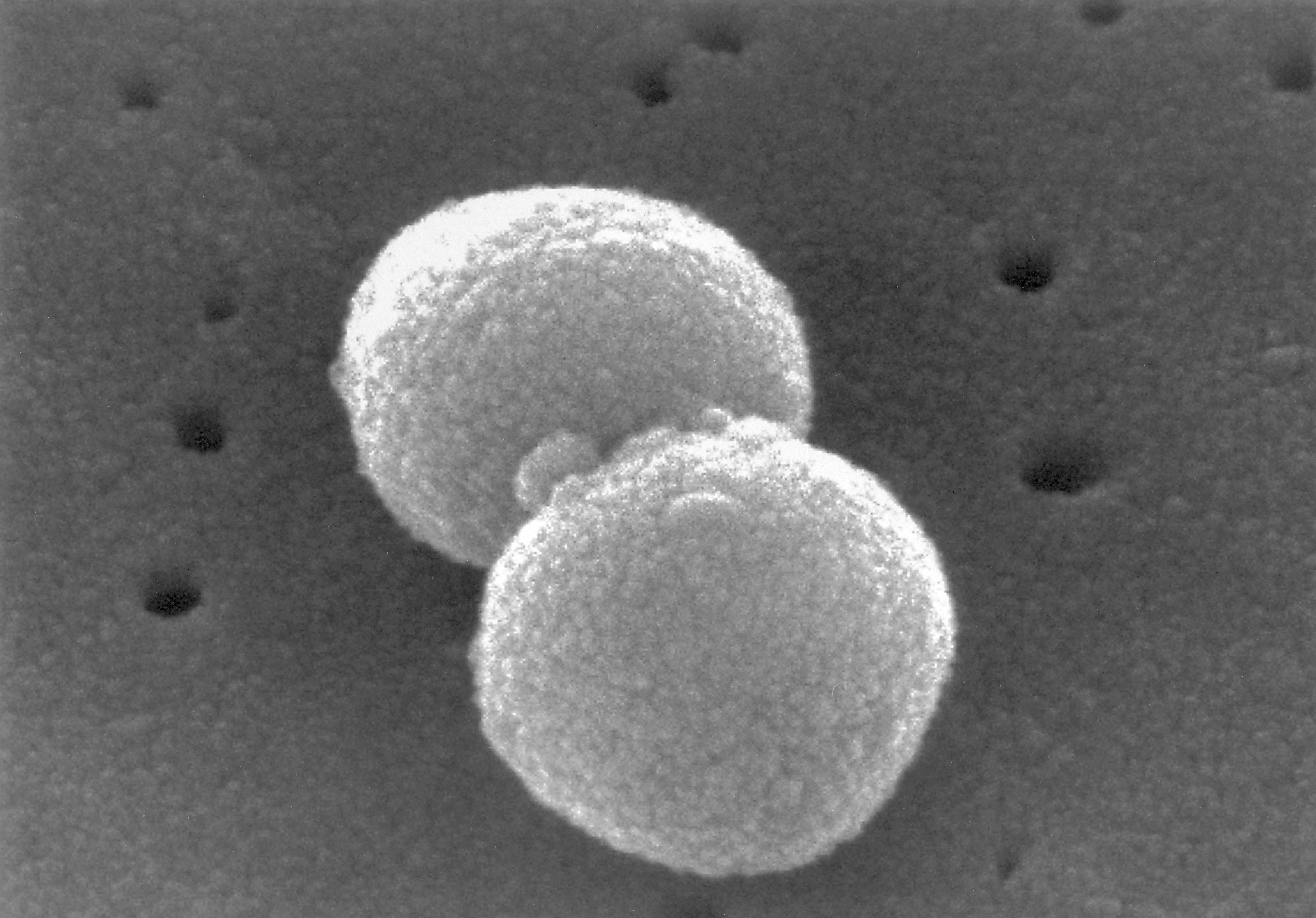The Three Domains: Archaea, Bacteria & Eukarya (Cambridge (CIE) A Level Biology): Revision Note
Exam code: 9700
The three domains: Archaea, Bacteria & Eukarya
Taxonomy is the practice of biological classification
It involves placing organisms into a series of categories or taxa
By grouping organisms into taxa it can make it easier to see evolutionary relationships between organisms
There are several different ranks or levels within the hierarchical classification system used in biology
The highest rank is the domain
Cell type has a major role in the classification of organisms into the three domains; but do not confuse cell types and domain
Prokaryotic cells are easily distinguishable in that they lack a nucleus
Eukaryotic cells have compartmentalised structures, with at least their genetic material segregated from the rest of the cell in a nucleus
Based upon molecular analysis of RNA genes in particular, scientists have realised that using cell type to classify organisms is insufficient, and that prokaryotes could be divided into two separate groups (domains)
The three domains are:
Archaea (prokaryotes)
Bacteria (prokaryotes)
Eukarya (eukaryotes)

Archaea
Archaea are single-celled (unicellular) organisms
Organisms within this domain are sometimes referred to as the extremophile prokaryotes
Archaea were first discovered living in extreme environments, but not all archaea do
Archael cells have no nucleus (and so are prokaryotic)
They were initially classified as bacteria until several unique properties were discovered that separated them from known bacteria, including:
Unique lipids being found in the membranes of their cells
No peptidoglycan in their cell walls
Ribosomal structure (particularly that of the small subunit) are more similar to the eukaryotic ribosome than that of the bacteria
Archaea have a similar size range as bacteria (and in many ways metabolism is similar between the two groups)
DNA transcription is more similar to that of eukaryotes
Example: Halobacterium salinarum are a species of the archaea domain that can be found in environments with high salt concentrations like the Dead Sea
Bacteria
Bacteria are single-celled (unicellular) organisms
These are organisms that have prokaryotic cells which contain no nucleus
They vary in size over a wide range: the smallest are bigger than the largest known-viruses and the largest are smaller that the smallest known single-celled eukaryotes
Bacterial cells divide by binary fission
Example: Streptococcus pneumoniae is a bacterial species that causes pneumonia

Eukarya
Organisms that have eukaryotic cells with nuclei and membrane-bound organelles are placed in this domain
They vary massively in size from single-celled organisms several micrometres across to large multicellular organisms many-metres in size, such as blue whales
Eukaryotic cells divide by mitosis
Eukaryotes can reproduce sexually or asexually
Example: Canis lupus also known as wolves

Examiner Tips and Tricks
It might be worth refreshing your knowledge on the defining features of prokaryotic and eukaryotic cells before tackling this new topic!
Differences between Archaea & Bacteria
Domains are the highest taxonomic rank that exist within the hierarchical classification system of organisms
Initially, all organisms within the Archaea domain were classified as Bacteria
Then several unique features possessed by Archaea were discovered that separated them from both Bacteria and Eukarya
The main differences between Archaea and Bacteria are seen in:
Membrane lipids
Ribosomal RNA
Cell wall composition
Membrane lipids
The membrane lipids found in the cells of Archaea organisms are completely unique
They are not found in any bacterial or eukaryotic cells
The membrane lipids of Archaea consist of branched hydrocarbon chains bonded to glycerol by ether linkages
The membrane lipids of Bacteria consist of unbranched hydrocarbon chains bonded to glycerol by ester linkages
Ribosomal RNA
Both Archaea and Bacteria possess 70S ribosomes
The 70S ribosomes in Archaea possess a smaller subunit that is more similar to the subunit found in Eukaryotic ribosomes than subunits in Bacterial ribosomes
The base sequences of ribosomal RNA in Archaea show more similarity to the rRNA of Eukarya than Bacteria
The primary structure of ribosome proteins in Archaea show more similarity to the ribosome proteins in Eukarya than Bacteria
Composition of cell walls
Organisms from the Bacteria domain have cells that always possess cell walls with peptidoglycan
Organisms from the Archaea domain also have cells that always possess cell walls, however these do not contain peptidoglycan
Archaea | Bacteria | Eukaryotes | |
|---|---|---|---|
Cell type | Prokaryotic | Prokaryotic | Eukaryotic |
Chromosome | Circular | Circular | Linear chromosomes + circular mtDNA and cpDNA |
Cell membrane lipids | Glycerol - ether lipids | Glycerol - ester lipids | Glycerol - ester lipids |
Ribosomes | 70S ribosomes but small subunit is more similar to eukaryotic ribosomes | 70S ribosomes | Large 80S ribosomes in the cytosol and 70S ribosomes in mitochondria and chloroplasts |
Cell walls | Always present (without peptidoglycan) | Always present (with peptidoglycan) | Sometimes present (without peptidoglycan) |
Histones | Yes | No | Yes |
Introns | Sometimes | Rarely | Yes |

Unlock more, it's free!
Did this page help you?